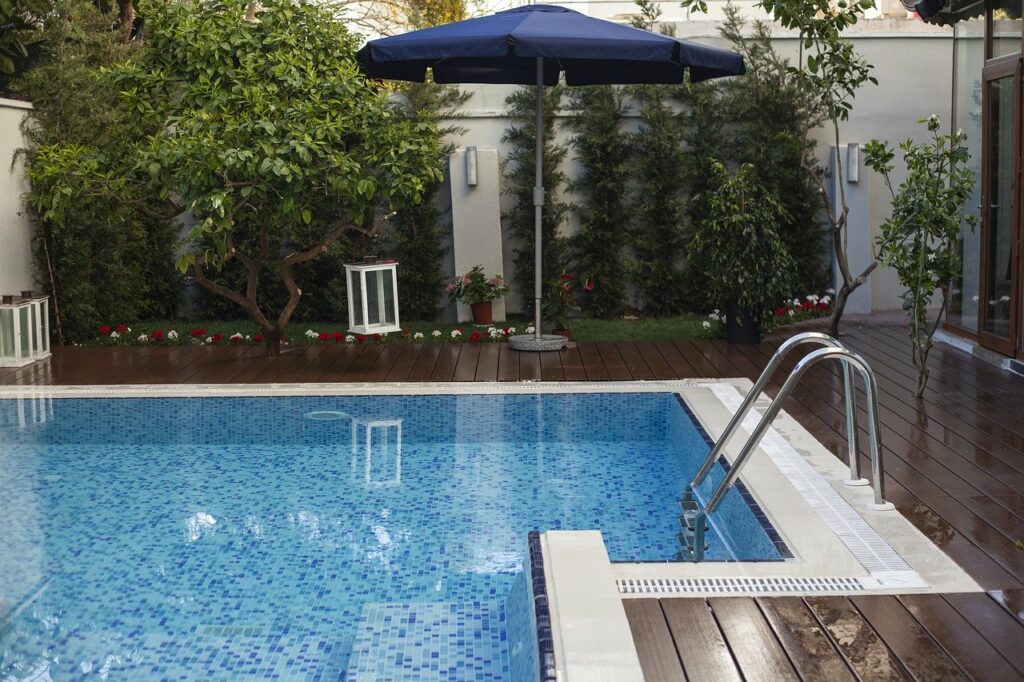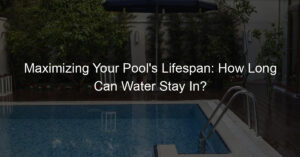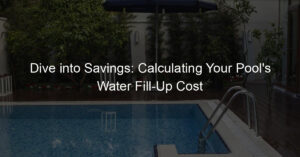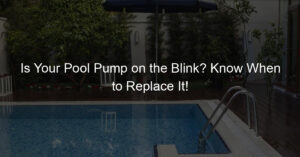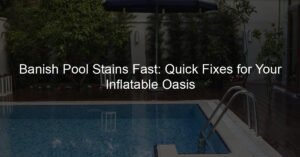Understanding the Purpose of Pool Skimmers
Pool skimmers play an integral role in maintaining the cleanliness and overall health of a swimming pool. They’re designed to remove debris, such as leaves, grass, and bugs, from the pool surface before it sinks and becomes more challenging to remove.
These components are a part of the pool’s circulation system and work by drawing in water from the pool’s surface, which then gets passed through a strainer basket that captures the debris. By understanding how skimmers work, you’ll be better prepared to vacuum a pool with two skimmers efficiently.
The Anatomy of a Pool Skimming System
A typical pool skimming system consists of a few essential parts. Firstly, the skimmer box, typically built into the pool’s side, houses a strainer basket to collect debris. Secondly, a skimmer door or weir, which adjusts with the water level, allows debris in but prevents it from escaping back into the pool.
Lastly, the system includes pipes and valves connecting to the pool’s pump and filter system. In a two-skimmer system, there are two skimmer boxes, usually placed strategically for optimal pool surface coverage.
Getting Familiar with a Two-Skimmer Pool System
Two-skimmer pool systems offer better debris removal compared to single-skimmer systems, especially in larger pools. The two skimmers are typically located at opposite ends or sides of the pool to ensure maximum coverage.
They work in tandem, allowing for the surface water to be drawn from multiple areas, increasing the overall efficiency of the pool’s cleaning and filtration system. Understanding the positioning and functioning of both skimmers will help you optimally vacuum the pool.
Essential Tools for Vacuuming a Pool with Two Skimmers
To vacuum a pool with two skimmers, you’ll need some essential tools, including a pool vacuum head, a telescopic pole, a vacuum hose, and skim-vacs or vacuum plates for each skimmer. A pool vacuum head is a device that you attach to the telescopic pole, and it helps to dislodge and collect the debris from the pool floor.
The skim-vacs or vacuum plates are used to connect the vacuum hose to the skimmers. The vacuum hose connects to the vacuum head and transports the dislodged debris to the skimmers.
Preparing Your Pool for Vacuuming
Before you start vacuuming, you need to prepare your pool. Remove any large debris from the pool surface using a leaf skimmer. Check and clean the skimmer baskets, as well. If your pool water level is low, fill it up until it reaches the middle of the skimmer opening.
This level ensures optimal skimming action and prevents the pump from drawing in air, which can cause damage. Moreover, it’s recommended to brush the pool walls and floor to dislodge any adhering debris before vacuuming.
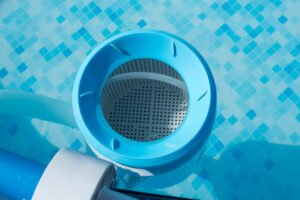
Setting Up the Vacuum System: The Initial Steps
To set up the vacuum system, begin by attaching the vacuum head to the telescopic pole. Then, connect one end of the vacuum hose to the vacuum head. To prevent air from entering the system, submerge the vacuum head along with the connected hose, letting the free end of the hose out of the water.
As it fills with water, all the air will be pushed out, which is crucial for the efficient functioning of the system.
Positioning the Vacuum Head: Key Considerations
Once the vacuum system is set up, position the vacuum head at the bottom of the pool. Make sure it’s flat against the pool floor to ensure efficient suction. Start vacuuming from the shallow end, slowly moving towards the deep end.
The key is to make slow and overlapping strokes, just like mowing a lawn. Avoid quick movements as they can stir up the debris, making it harder to clean.
Connecting Your Vacuum Hose to the Skimmers
Next, it’s time to connect the vacuum hose to the skimmers. Using the skim-vacs or vacuum plates, attach the free end of the vacuum hose to the skimmer’s suction port. If your pool has two skimmers, choose one for the vacuum connection and leave the other one for surface skimming.
You may need to adjust the valves to ensure the vacuumed water is being drawn mainly from the selected skimmer.
Balancing the Use of Two Skimmers
When vacuuming a pool with two skimmers, balancing the use of both is crucial. As a general rule, one skimmer is used for vacuuming, while the other continues to remove surface debris.
The system’s valves allow you to regulate the suction power between the two skimmers. Ideally, you want the skimmer attached to the vacuum to have more suction power to effectively vacuum the pool floor.
Starting the Vacuuming Process: Tips and Tricks
Once everything is connected, start your pool pump to initiate the vacuuming process. Vacuum the pool floor slowly and methodically, much like you’d vacuum a carpet. Ensure you cover the entire pool, focusing on areas where you notice more debris.
If the suction feels weak or the pump is making unusual noises, check for air in the system, as it can decrease the efficiency of the cleaning process and even damage the pump.

Monitoring the Pool’s Circulation During Vacuuming
During the vacuuming process, it’s crucial to keep an eye on the pool’s circulation. If the water isn’t circulating properly, the vacuum won’t effectively remove the debris. Regularly check your skimmers, pump, and filter during the process.
If you notice a decrease in water flow or if the pump basket is filling up with debris too quickly, you may need to pause, clean the baskets, and then resume vacuuming.
Ensuring Efficient Cleaning with Both Skimmers
To ensure efficient cleaning, alternate the skimmers for vacuuming. If you started with one skimmer, switch to the other halfway through. This ensures the entire pool gets effectively cleaned, as the different positions of the skimmers can affect the areas they cover.
Keep adjusting the valves as necessary when you switch the vacuuming skimmer to maintain optimal suction.
Adjusting Skimmer Valves: How and When
Your pool’s skimmer valves play a vital role in controlling the water flow from the skimmers to the pump. They allow you to adjust the suction power between the skimmers, ensuring effective vacuuming and surface skimming.
When vacuuming, you want to direct more suction to the skimmer connected to the vacuum. If your pool does not have valves, you might consider using a skimmer plug or float valve for the skimmer not used for vacuuming.
Troubleshooting Common Issues While Vacuuming
While vacuuming, you might encounter some common issues such as reduced suction, debris returning to the pool, or the pump losing prime. Reduced suction could be due to clogged skimmer baskets, a kinked vacuum hose, or air in the system.
Debris returning to the pool might indicate a need to clean or replace the pool filter. If the pump loses prime, check for water level, skimmer baskets, and the vacuum setup to ensure no air enters the system.
Handling a Clogged Skimmer during Vacuuming
If a skimmer gets clogged during vacuuming, stop the pump and remove the debris from the skimmer basket. If the clog is not in the basket, it might be in the skimmer pipe. In such cases, you can use a drain snake or a similar tool to remove the clog. If the skimmer is still clogged, you might need professional help as the clog could be further down the line.
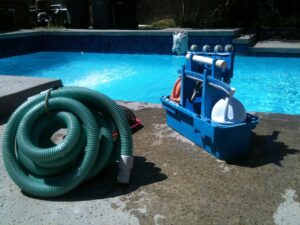
Maintaining Your Skimmers for Optimum Pool Health
Regular maintenance of your skimmers is crucial for the overall health of your pool. Keep the skimmer baskets clean and replace them if they’re damaged. Monitor the water level to ensure it’s within the optimal range for the skimmers to work effectively. Check the skimmer weirs and replace them if they’re stuck or broken. A properly functioning skimming system contributes to more efficient vacuuming and overall cleaner pool water.
The Role of Skimmers in Maintaining Pool Cleanliness
Skimmers play a crucial role in maintaining pool cleanliness by removing surface debris before it can sink to the bottom. They also improve the efficiency of the pool’s circulation system by drawing water from the surface, which gets filtered and returned to the pool.
When vacuuming a pool, skimmers help transport the vacuumed debris to the filtration system, making them a critical part of the pool cleaning process.
Post-Vacuum Pool Care: Essential Steps
After vacuuming, don’t forget to perform post-care tasks for your pool. Clean and replace the skimmer baskets, clean the pump basket, and backwash or clean the filter as needed. Adjust the valves to restore normal skimming action if you had changed them for vacuuming. Lastly, check the pool water chemistry and adjust as necessary. These steps will ensure your pool remains clean and healthy for use.
Regular Maintenance: Ensuring Longevity of Your Pool’s Vacuum System
Regular maintenance of your pool’s vacuum system is important for its longevity. This includes cleaning the vacuum head, flushing the vacuum hose, and checking for any damages or wear and tear. Regularly inspect the vacuum hose for any leaks and replace if needed. Proper storage of the vacuum system also matters – keep it out of direct sunlight and in a clean, dry place.
Review and Key Takeaways: Vacuuming a Pool with Two Skimmers
In conclusion, vacuuming a pool with two skimmers requires understanding the function of skimmers, the vacuum setup, and how to balance the use of two skimmers. Regular maintenance of the skimmers and the vacuum system, proper vacuuming technique, and handling common issues efficiently are all crucial for maintaining a clean and healthy pool. By following these tips and procedures, you’ll be able to efficiently clean your pool, ensuring it remains inviting and ready for use at all times.
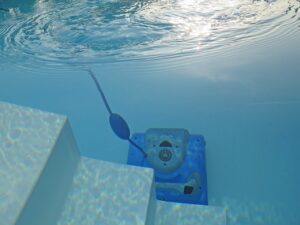
Conclusion
Taking care of a swimming pool is a multifaceted responsibility that involves understanding and managing the various components involved, especially when dealing with a pool with two skimmers. The process of vacuuming such a pool requires a solid grasp of the equipment needed, the role of skimmers in the pool’s ecosystem, the setup and handling of the vacuuming process, and the importance of balancing the usage of the skimmers.
In this comprehensive guide, we’ve highlighted the crucial steps in preparing for and executing the vacuuming task. We’ve discussed how to effectively manage common issues that might arise during the process and the importance of regular maintenance for optimal pool health. Moreover, we’ve underscored the necessity of post-vacuum care and the maintenance of the vacuum system itself for longevity.
By following this guide, pool owners will be well-equipped to maintain the cleanliness and overall health of their pools. Ultimately, the goal is to ensure that your pool remains a safe, clean, and enjoyable space for everyone. By investing time and effort in proper pool maintenance, you’ll enhance the longevity of your pool and its components, saving both time and money in the long run.

